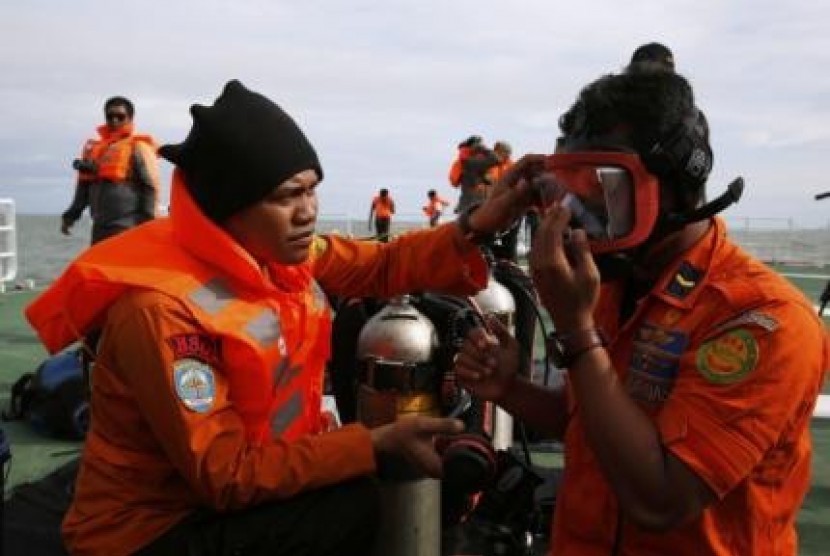REPUBLIKA.CO.ID, SURABAYA -- The cause of the AirAsia flight Qa8501 crash - the first suffered by the AirAsia group since the budget operator began flying in 2002 - is unexplained. Investigators are working on a theory that the plane stalled as it climbed steeply to avoid a storm about 40 minutes into a flight that should have lasted two hours.
Officials earlier said it may take up to a week to find the black boxes, which investigators hope will unravel the sequence of events in the cockpit during the doomed jet's final minutes.
Even in bad weather, however, the search for the AirAsia plane is less technically challenging than the two-year search for an Air France jet that crashed into deep Atlantic waters in 2009, or the fruitless hunt for Malaysia Airlines Flight MH370 that disappeared last year. Given Flight QZ8501 crashed in shallow seas, experts say finding the boxes should not be difficult if its locator beacons, with a range of 2,000 to 3,000 meters (6,560 to 9,800 ft) and a battery life of about 30 days, are working.
Twenty-two bodies have been recovered from the sea, Supriadi, mission co-ordinator for the Indonesian search and rescue agency, told a news conference. Debris such as luggage, an emergency slide and a life jacket has also been found.
The bodies are being taken in numbered coffins to Surabaya, where relatives of the victims, most of whom were Indonesian, have gathered. Authorities have been collecting DNA from relatives to help identify the bodies. The first funeral one of the crash victims was held on Thursday, and on Friday officials said the remains of three more had been identified, including a flight attendant.
The plane was traveling at 32,000 ft (9,753 meters) and the pilots had asked to climb to 38,000 ft to avoid bad weather just before contact was lost. When air traffic controllers granted permission to fly at 34,000 ft a few minutes later, they got no response. A source close to the investigation said radar data appeared to show the aircraft made an "unbelievably" steep climb before it crashed, possibly pushing it beyond the A320's limits.
"It appears to be beyond the performance envelope of the aircraft," he said.
Online discussion among pilots has centered on unconfirmed secondary radar data from Malaysia that suggested the aircraft was climbing at a speed of 353 knots, about 100 knots too slow, and that it might have stalled.
The Indonesian captain, a former air force fighter pilot, had 6,100 flying hours on the A320 and the plane last underwent maintenance in mid-November, according to Indonesia AirAsia, which is 49 percent owned by Malaysia-based AirAsia.



